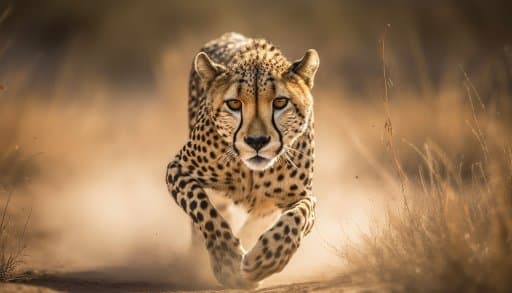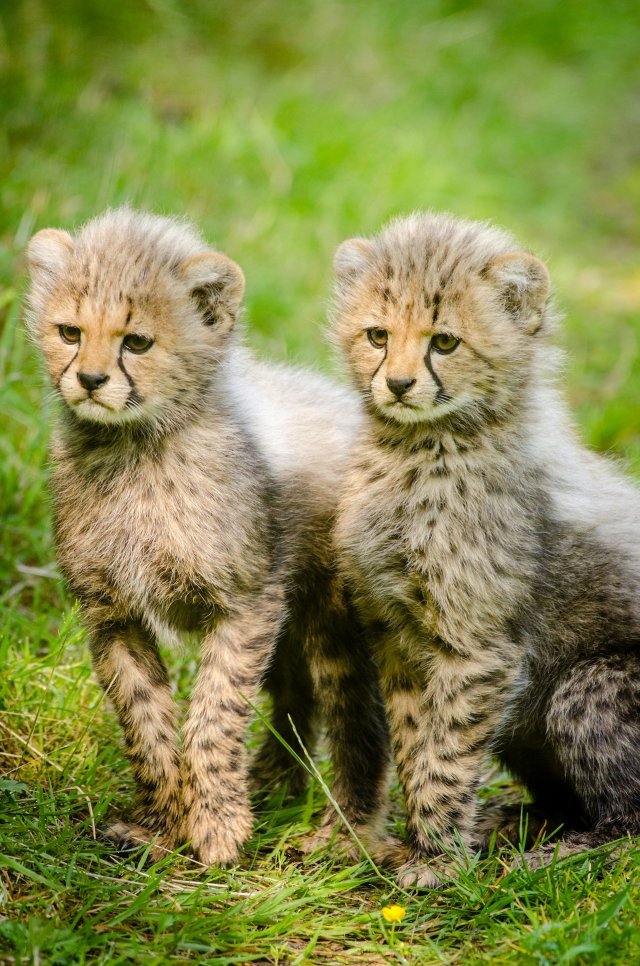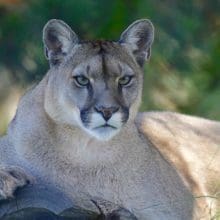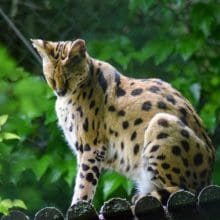How Does the Cheetah Maintain Its Title as the Fastest Land Animal?
The Fastest Land Animal
The cheetah, known for its incredible speed and agility, has long held the title of the fastest land animal. With its slender body, long legs, and distinctive black tear stripes, the cheetah is a marvel of nature. But what exactly allows this magnificent creature to reach such incredible speeds? In this article, we will explore the various factors that contribute to the cheetah’s unmatched speed and examine how it maintains its title as the fastest land animal.
The Anatomy of Speed
One of the key factors that enables the cheetah to achieve its remarkable speed is its unique anatomy. The cheetah’s body is built for speed, with a lightweight frame and long, slender limbs. Its lightweight skeleton, reduced number of bones, and flexible spine allow for efficient movement and increased stride length.
The cheetah’s long legs provide it with a longer stride, allowing it to cover more ground with each step. Additionally, its large nasal passages and lungs enable it to take in more oxygen, providing the necessary fuel for its muscles during high-speed chases.
Muscle Power and Adaptations
Another crucial aspect of the cheetah’s speed lies in its muscular system. The cheetah possesses an impressive combination of strength and agility, thanks to its well-developed muscles. Its hind legs, in particular, are incredibly powerful, providing the necessary propulsion for rapid acceleration.
Furthermore, the cheetah’s spine is highly flexible, allowing it to stretch its body during each stride. This flexibility enables the cheetah to achieve a longer stride length, covering more ground with each step and ultimately reaching higher speeds.
Acceleration and Speed
When it comes to acceleration, the cheetah is unmatched. It can go from 0 to 60 miles per hour (97 kilometers per hour) in just a few seconds, making it faster than most sports cars. This incredible acceleration is due to the cheetah’s powerful leg muscles and its ability to generate a tremendous amount of force with each stride.
During a chase, the cheetah’s body acts like a coiled spring, storing and releasing energy with each stride. As it runs, the cheetah’s spine flexes and extends, allowing it to stretch its body and generate more power. This combination of speed and agility gives the cheetah a significant advantage when hunting prey.
Adaptations for Hunting
The cheetah’s speed is not only a result of its physical attributes but also its hunting strategies. Unlike other big cats that rely on stealth and ambush, the cheetah is a specialized predator that relies on its speed to catch its prey.
One of the cheetah’s unique adaptations for hunting is its exceptional eyesight. Its large, forward-facing eyes provide a wide field of view and excellent depth perception, allowing it to track prey accurately even at high speeds. The black tear stripes running from the inner corner of its eyes down to the sides of its mouth help reduce glare from the sun and improve focus on the target.
Additionally, the cheetah’s non-retractable claws provide it with better traction and grip while running. These claws act like cleats, digging into the ground and preventing slippage during high-speed pursuits.
Conserving Energy
While the cheetah is capable of incredible bursts of speed, it cannot maintain its top speed for long distances. After a short sprint, the cheetah quickly tires and needs time to recover. To conserve energy, the cheetah relies on strategic hunting techniques and efficient movement.
When hunting, the cheetah carefully selects its prey, targeting weaker or slower individuals. By choosing its targets wisely, the cheetah minimizes the energy expended during the chase. Additionally, the cheetah uses its speed to get as close as possible to the prey before initiating the final burst, reducing the overall distance it needs to cover.
Summary
The cheetah’s title as the fastest land animal is a result of a combination of factors. Its unique anatomy, including a lightweight frame, long legs, and flexible spine, allows for efficient movement and increased stride length. The cheetah’s powerful muscles, particularly in its hind legs, provide the necessary propulsion for rapid acceleration.
Furthermore, the cheetah’s hunting strategies, exceptional eyesight, and non-retractable claws contribute to its ability to maintain its title as the fastest land animal. While the cheetah’s speed is awe-inspiring, it must also conserve energy and carefully select its prey to ensure successful hunts.
In conclusion, the cheetah’s remarkable speed is a result of a perfect blend of physical adaptations, hunting strategies, and efficient movement. Its title as the fastest land animal is well-deserved and continues to captivate and inspire awe in all who witness its incredible speed.
Read More About Cheetah’s From Wikipedia





